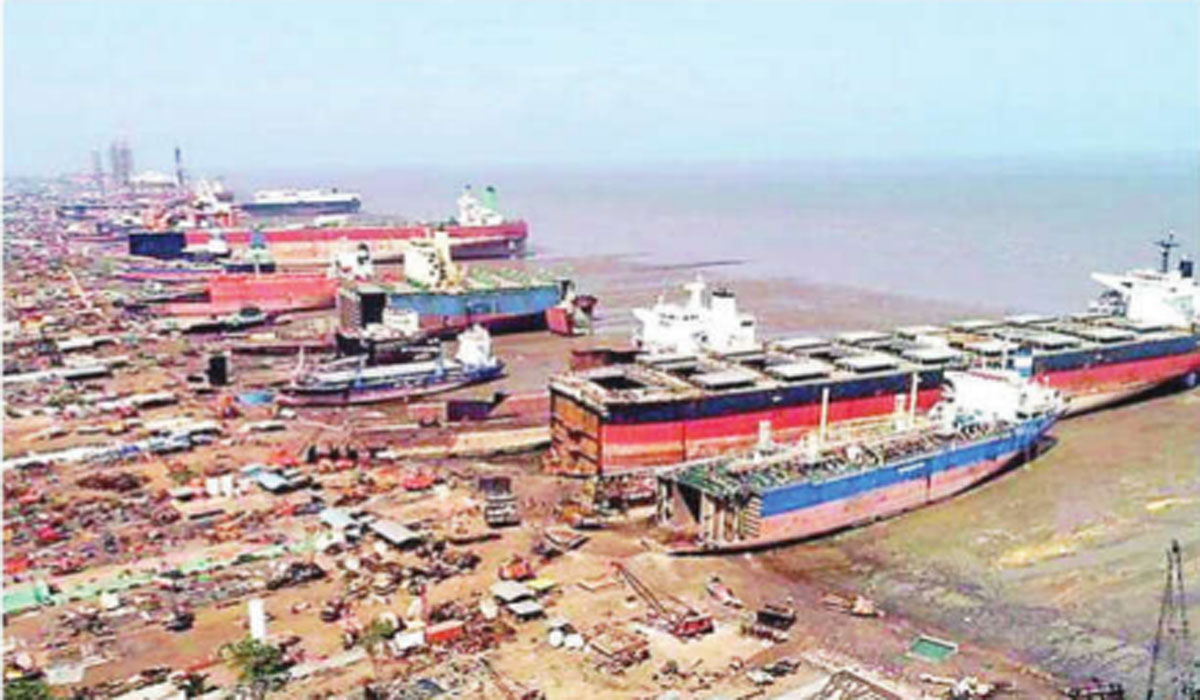
Along the salt-kissed shores of Gujarat’s Saurashtra coast lies Alang, once the world’s premier destination for shipbreaking — where colossal vessels came to be dismantled and reborn as scrap metal. A decade ago, this fourteen-kilometre stretch of beach saw over 400 ships sliced apart in a single year. But today, Alang’s yards are eerily quieter, operating at less than a fifth of their former capacity.
Shipowners now send barely a hundred hulls here annually, a steep decline from the past. Once a cornerstone of India’s steel supply, Alang’s shipbreaking industry has slipped sharply. Its contribution to the country’s crude steel production has dropped from 5% to below 1%. Meanwhile, the scrap metal that once fed India’s booming steel industry increasingly finds its way to shipbreaking yards in Bangladesh’s Chattogram, Pakistan’s Karachi, and Turkey’s growing Aliaga facility.
The bustling workforce that once numbered 35,000 now hovers around 15,000, many uncertain about their future. This decline, however, is not inevitable. It represents a critical pause—one that can be reversed with timely action and decisive reforms. The global shipping industry has entered an unusual phase. Sanctions on Russia and Iran have birthed “shadow fleets,” causing older tankers to remain operational far beyond their typical lifespan.
At the same time, instability in the Red Sea due to Houthi unrest has forced longer shipping routes, allowing even ageing vessels to remain profitable. These shifts have tightened the supply of ships available for scrapping, pushing buyers to scour the world for the best prices. Bangladesh, in particular, has become a formidable competitor.
Despite its smaller and less technologically advanced yards, it offers shipowners up to $40–50 more per light displacement tonne (LDT) than Indian yards can match. This pricing advantage is largely due to Bangladesh’s low-cost, low-compliance beaching methods, where ships are deliberately grounded during high tide and dismantled on the shore, allowing hazardous wastes to wash away with the tide.
While environmentally damaging, this method drastically reduces operational costs compared to India’s greener, more regulated approach, which complies with international standards such as the Hong Kong Convention and the European Union’s Ship Recycling Regulation.
At Alang, progress towards modernization has stalled. The Gujarat Maritime Board announced plans in 2022 for 28 new standardized shipbreaking plots, aiming to boost efficiency and attract larger vessels. But nearly two years on, there has been no auction, no tendering, and no visible progress. This delay hampers the industry’s ability to compete globally.
Compounding this is a regulatory bottleneck within the Bureau of Indian Standards (BIS). Since 2012, BIS has withheld IS-1786 certification for reinforcement bars made from ship scrap, citing concerns about inconsistent chemical composition. Yet, extensive metallurgical research led by the Ministry of Steel and industry groups has demonstrated that the steel meets or exceeds all mechanical and quality standards.
Without certification, recyclers must sell their steel in the informal market as Cold Twisted Deformed (CTD) bars, which fetch lower prices and are used only in low-end construction projects. This limitation cuts off a crucial revenue stream that could be reinvested into modernizing yards and expanding capacity. Additionally, hazardous w a s t e m a n a g e m e n t infrastructure is struggling. Alang’s only licensed hazardous waste facility, operated by Gujarat Enviro Protection & Infrastructure Ltd (GEPIL), is overwhelmed.
Proposals to double its capacity, submitted in 2021, remain mired in administrative delays. This bottleneck jeopardizes contracts with environmentally conscious European clients, who may shift business to countries with better waste handling.
The Indian government recognizes these challenges. Under the Maritime India Vision 2030, Prime Minister Narendra Modi aims to make India the world’s leading ship recycling destination by decade’s end. India already ranks second globally in shipbreaking and was instrumental in advancing the Hong Kong Convention, whose enforcement is slated for mid-2025.
Senior officials in the Prime Minister’s Office have reportedly engaged with industry players to identify bottlenecks, and ministries overseeing shipping and steel acknowledge the need for coordinated reforms. The coming decade offers a rare opportunity.
Analysts forecast that between 2026 and 2035, as many as 15,000 ships will reach the end of their service lives, triggering a global surge in ship recycling demand. If Alang and Gujarat’s other yards fail to modernize, this business will migrate to Bangladesh, Pakistan, or Turkey, costing India significant economic and strategic ground.
Unlock Steel Certification: BIS should approve ISI certification for ship – recycled steel based on successful trial data. This move would open access to the lucrative TMT (ThermoMechanically Treated) steel market, enhancing revenue for recyclers and enabling reinvestment into modernization. Expand Hazardous Waste Capacity: Authorities must fast-track approvals to double GEPIL’s waste-processing facility, putting it on par with the urgency given to renewable energ y projects.
This expansion is vital for meeting environmental regulations and maintaining international contracts. Launch the Auction for New Plots: With global shipbreaking supply currently low but expected to rise sharply, a transparent and time-bound auction of the 28 standardized plots would signal India’s readiness to reclaim its leadership position.
Decentralize Shipbreaking: Developing secondary recycling hubs at ports like Paradip, Tuticorin, and Haldia can reduce pressure on Alang, diversify economic benefits, and integrate shipbreaking more firmly within India’s broader maritime economy.
